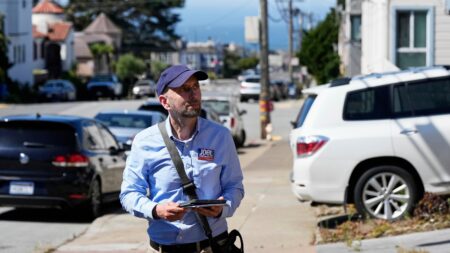San Francisco School ŌĆ£Merry ChristmasŌĆØ Ban: Unraveling the Myth and Its Lessons
Clarifying the ŌĆ£Merry ChristmasŌĆØ Ban Allegation: What Really Happened?
Contrary to viral claims circulating online, a San Francisco school has not prohibited the use of the phrase ŌĆ£Merry ChristmasŌĆØ. The controversy ignited when social media users alleged that the school administration sought to remove traditional holiday greetings to avoid offending students from diverse cultural backgrounds. However, after a comprehensive review, city officials and school representatives confirmed that no such ban exists. In fact, the school actively promotes inclusive holiday celebrations that honor various traditions.
Staff and community members have verified that Christmas decorations and festive events were fully supported and organized this year. The misinformation caused unnecessary confusion, prompting the school district to issue a public clarification. Key points dispelling the falsehood include:
- There is no official restriction on holiday greetings, including ŌĆ£Merry Christmas.ŌĆØ
- Holiday activities remain inclusive and open to all students regardless of background.
- Community leaders advocate for calm and encourage verifying facts before sharing.
| Topic | False Claim | Verified Reality |
|---|---|---|
| School Policy | ŌĆ£Merry ChristmasŌĆØ banned | Policy embraces inclusive greetings |
| Holiday Events | Cancelled amid backlash | Events proceeded as scheduled |
| Community Response | Confusion and division | Unified after official statements |
Tracing the Spread: How the Misinformation Gained Momentum
The false narrative originated from a post in a local Facebook group, which quickly gained traction as users shared it without verifying the facts. Misinterpretations of school communications and out-of-context remarks contributed to the escalation. Sensational headlines lacking credible sources further distorted the story, transforming a minor misunderstanding into a widespread rumor.
This incident underscores the challenges posed by digital platforms where unverified content can rapidly go viral. Several factors fueled the misinformationŌĆÖs persistence:
- Delayed official communication: The absence of immediate clarifications allowed rumors to fill the void.
- Emotional engagement: Heated online debates encouraged widespread sharing and polarization.
- Algorithmic amplification: Social media algorithms prioritized sensational content due to high user interaction.
| Stage | Action | Effect |
|---|---|---|
| Initial Post | Unverified claim shared | Generated concern and curiosity |
| Viral Spread | Repeated sharing without fact-checking | Widespread acceptance of falsehood |
| Official Response | School issues factual clarification | Rumor debunked and misinformation curbed |
Rebuilding Trust: Community Impact and Policy Adjustments
The viral misinformation strained trust between the school district and the local community. Parents and residents voiced concerns about transparency and the flow of accurate information. This episode revealed a disconnect between public perception and the schoolŌĆÖs actual practices, prompting calls for improved communication and collaboration.
In response, the school district has implemented several measures to prevent similar misunderstandings in the future, including:
- Strengthened communication strategies: Regular updates and proactive fact-checking to counteract rumors.
- Professional development: Training educators to handle sensitive cultural topics with care and awareness.
- Community involvement: Hosting more town hall meetings and forums to foster dialogue and transparency.
| Initiative | Goal | Anticipated Result |
|---|---|---|
| Communication Enhancements | Clarify information flow | Minimize rumor propagation |
| Staff Education | Promote cultural competence | Foster inclusive learning environments |
| Community Forums | Increase transparency | Restore public confidence |
Strategies to Combat Misinformation in Schools
Effectively addressing misinformation in educational settings demands a comprehensive and proactive approach. Schools should cultivate an atmosphere that encourages open discussion and critical analysis. Integrating media literacy education into the curriculum equips students with the skills to evaluate sources and verify information before dissemination.
Collaborations with reputable local media and fact-checking organizations can provide valuable resources for educators and students alike, reinforcing a culture of accuracy and accountability. Additionally, establishing clear communication channels is vital. Schools should appoint official spokespersons and rapid response teams to promptly address rumors and prevent escalation.
| Approach | Implementation | Expected Benefit |
|---|---|---|
| Media Literacy | Develop and integrate curriculum modules | Empowers students to critically assess information |
| Communication Framework | Designate official communicators | Enables swift and accurate rumor control |
| Community Outreach | Organize informational sessions | Enhances transparency and trust |
- Train educators to recognize and counteract misinformation effectively.
- Engage parents to maintain consistent and accurate messaging beyond school walls.
- Utilize social media responsibly by sharing verified updates through official channels.
Looking Ahead: Embracing Inclusivity Over Division
The so-called ŌĆ£Merry ChristmasŌĆØ ban at a San Francisco school, which ignited widespread debate and confusion, has been conclusively disproven. Investigations by USA Today and local authorities found no evidence supporting the claim that students were prohibited from using traditional holiday greetings. This episode serves as a reminder of the critical need to verify information before accepting or sharing it, especially on sensitive cultural topics.
As communities prepare for upcoming holiday seasons, the focus should remain on fostering inclusiveness, respect, and understanding rather than succumbing to divisive rumors. By promoting open communication and media literacy, schools and communities can work together to build a more informed and harmonious environment.


